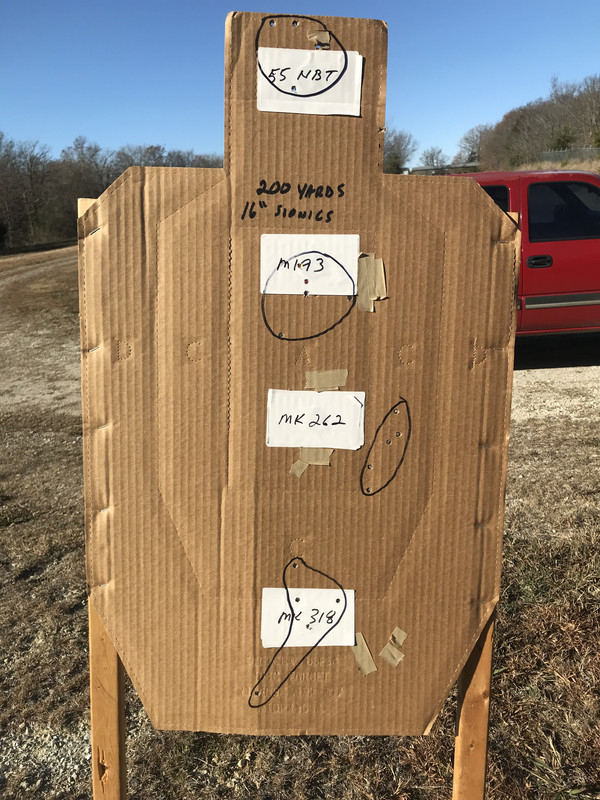
Originally Posted by
Sanch

Other topics/questions:
If you zero a 5.56 AR using a 25/300 or 50/200 zero, Iíve heard some claim on the internet that they like to do the initial zero at 25 or 50 and then confirm it at 200/300 when they can take it out to distance and adjust as needed. Iím wondering how plausible that is to use a 2 MOA red dot at 200 or 300 yards, coveting 4Ē or 6Ē of the target, respectively to make small enough groups to refine a zero at distance. Now that Iím learning more of shooting, Iím calling bullshit here but open to the possibility itís a legit thing.
Are some people doing custom zeros? Like an 87 yard zero or something fancy, where for their intended purpose, they get a flatter trajectory within that narrower set of distances? Any thoughts on these kinds of non-standard zeros?
Are people DOPE-into their red dot carbines, or are they plugging barrel length and round into a calculator program to find trajectory? I assume people donít bother with actual DOPEs since the application of a red dot carbine doesnít make much sense for for that. Do you really need to know the holdover is 3.5 inches at 185 yards? Or do you just put the dot on the target out to 200 and call it good enough? And the. Possibly memorize the holdovers for 300, 400, 500, 600 for 5.56 out of your gun, in the event of some crazy shot you need to make with nonmagnified red dot? Which holdovers outside of zeroing range (200 or 300) do you find useful to know?
Do you zero for ďdutyĒ loads like 62 gr soft point or 75 grain TAP, and then shoot cheaper 55gr FMJ to learn offsets with that cheaper practice round? And then if taking a class, you apply those offsets as needed for longer shots?
Is it possible to zero the gun for duty ammo, then shoot cheaper 55gr FMJ, identify the exact zeroing adjustments, say itís 5 clicks down and 2 clicks right. Then for a training class, dial those adjustments into the aimpoint. And when done, dial the same ones backwards, and would that return you to the zero for the duty rounds? I assume this should technically work, although I also assume that most classes for carbines are 90% out to 50 yards or less, and 10% of the class might be 100 yards, due to logistics of open enrollment classes lacking access to longer ranges and open enrollment student base not interested in 200 yard carbine shots.
My point being, Iíd bet it would work to temporarily adjust the aimpoint zero with a note on how to revert it without shooting any duty ammo, however the offset is likely irreverent to the average open enrollment class. Although, the effort seems fairly low, if it technically works. Show up to the class with the gun zero for duty ammo. During the zero portion of class, shoot the cheaper ammo. Take good notes on how many clicks you made. And then revert later at end of class.
With ammo availability being touchy, I wonder if I can identify the five different commonly available 5.56 cheaper 55gr loads I buy. Like I used to get magtech but that dried up and now itís X-tac. And I wonder if I can take the effort to record the zero differences compared to the baseline duty loadout. So the gun stays zeroed for the duty ammo. And if I can find magtech then I look in my notes where 3 years ago I had identified the zero difference is 7 clicks down and 2 clicks left relative to the duty ammo zero. And then not even need to take the effort to zero it, just dial those clicks I previously identified. Or maybe the different lots of non-match grade ammo are so different over time, it wonít hold true?
As Iím getting more into carbines, I realize thereís the potential for some interesting ideas beyond the basics of zeroing.
Do any of these ideas have merit? What advanced zero techniques do you use?



 Reply With Quote
Reply With Quote



